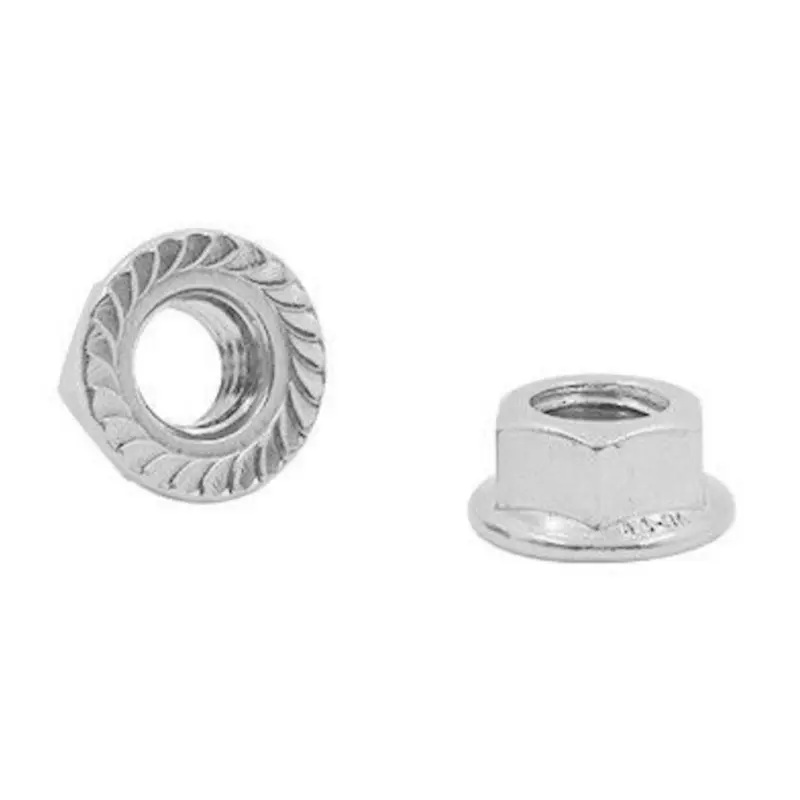The dimensions and thread specifications of stainless steel flange nuts and general stainless steel hexagonal nuts are basically the same. However, compared with stainless steel hexagonal nuts, stainless steel flange nuts have gaskets and nuts that are integrated, and there are anti-slip tooth patterns on the bottom. The surface area of contact between the nut and the workpiece is increased, which is stronger and has greater pulling force than the combination of ordinary nuts and washers.
Generally, the specifications of common stainless steel flange nuts are generally below M12. Because most flange nuts are used on pipes and flanges, they are subject to workpiece constraints. Compared with nuts, flange nut specifications are smaller. Most of the flange nuts above M12 are flat flanges, that is, there are no teeth on the flange surface. Most of these nuts are used in some special equipment and special places. The stainless steel flange connection imposes a temperature load of 573K on the inside and outside of the flange. .
There is no insulation layer on the outer surface of the flange and pipe. Consider the influence of the air layer in the bolt hole, the air layer between the upper and lower flanges, and the heat transfer on the outer surface of the flange on the system temperature distribution. The equivalent convection heat transfer coefficient is applied to the outer surface of the flange, the parts where the bolts and nuts are in contact with the air, and the equivalent thermal conductivity is applied to the air layer in the bolt hole and the air layer between the upper and lower flanges.
Post time: Mar-29-2024


